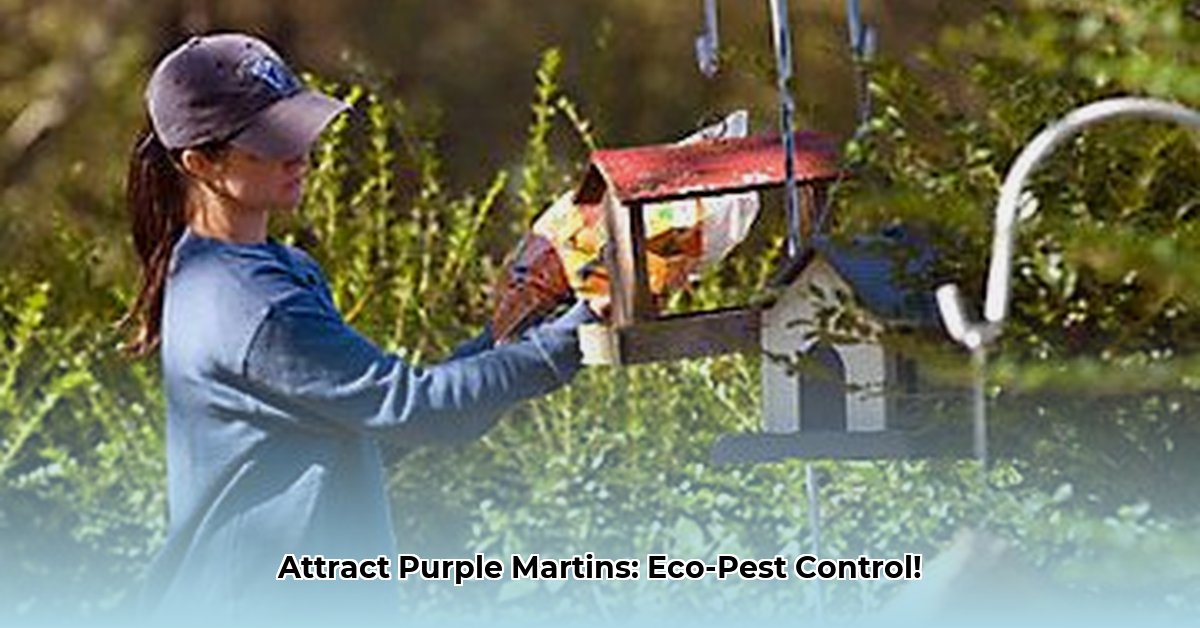
Choosing the Right Purple Martin House from Tractor Supply
Dealing with pests naturally is a growing concern for environmentally conscious farmers and homeowners. Purple martins, voracious insect-eaters, offer a sustainable solution, and Tractor Supply provides the perfect starting point with their selection of birdhouses. This guide will empower you to attract these beneficial birds, leading to reduced pest populations and a healthier ecosystem. But how do you choose the right house?
For more DIY birdhouse options, check out this helpful resource.
Tractor Supply offers a variety of Purple Martin houses, each with unique features. Choosing the right one is crucial for attracting and maintaining a healthy colony. Consider these factors:
Size: Larger houses generally accommodate larger colonies, translating to more effective pest control. Look for houses with at least six compartments, or even more for optimal impact. Think of it as providing more luxury bird condos for improved occupancy rates! A larger capacity leads to a larger bird population and, therefore, more effective pest control.
Material: Durability is key. Opt for weather-resistant materials like high-quality wood that can withstand harsh weather conditions. A durable house will last for years, saving you money and ensuring long-term pest control. Investing in a sturdy house is an investment in long-term, sustainable pest management.
Design: Consider different styles, such as classic apartment-style houses or more natural-looking gourd-style options. Apartment-style houses offer easier cleaning and maintenance, while gourd styles offer a more rustic aesthetic.
[Insert image of a purple martin house from Tractor Supply here]
Optimal Placement and Habitat Management: Creating a Purple Martin Paradise
Proper placement is paramount to attracting Purple Martins. Success depends on creating an inviting habitat that meets their specific needs.
Height: Mount the birdhouse 12-18 feet high on a sturdy pole. This elevation offers protection from ground predators and provides the birds with a strategic vantage point for spotting insects. The increased height ensures safety from terrestrial predators and prime insect hunting grounds.
Location: Choose an open area, at least 100 feet away from trees or tall structures, providing ample flying space and a clear view of the surrounding area. Think of it as providing prime "bird real estate" – spacious, unobstructed, and with an impressive view. This helps them easily spot insects and reduces competition from other birds.
Water Source: Provide a nearby water source, such as a bird bath or a pond. Water is essential for drinking and bathing, adding to the overall appeal of your birdhouse community. Access to clean water is critical for the survival and well-being of your new avian neighbors.
[Insert diagram illustrating optimal birdhouse placement here]
Maintaining Your Birdhouses: Ensuring Long-Term Success
Regular maintenance is vital for ensuring the longevity and effectiveness of your birdhouses. Think of it as regular maintenance for your natural pest control team!
Annual Cleaning: Clean the birdhouses thoroughly after the breeding season (typically late summer or fall). Remove old nests and debris to prevent the buildup of parasites and maintain a healthy environment. A clean house attracts more birds and reduces the risk of disease.
Repairs: Address any damage promptly. A well-maintained structure ensures the safety and comfort of the birds. Regular inspections and repairs will significantly extend the lifespan of your birdhouse and ensure consistent pest control.
Predator Protection: Install predator guards to deter snakes, raccoons, and other predators. Protecting the birds from predators ensures the survival of your feathered helpers and maximizes their effectiveness.
Monitoring and Evaluation: Tracking Your Progress
Tracking the success of your birdhouses provides valuable insights and helps you optimize your approach. This is essentially data-driven pest control!
Occupancy: Note when the martins arrive and the number of occupied nests. High occupancy indicates a successful birdhouse placement and overall habitat.
Breeding Success: Monitor the number of fledglings (baby birds) produced each breeding season. This directly reflects the health of your colony.
Pest Levels: Observe changes in pest populations. A decrease in targeted insects is the ultimate measure of success. This approach allows for continuous improvement and adjustments for maximum pest reduction.
Limitations and Considerations: Setting Realistic Expectations
While Purple Martins are excellent pest controllers, it's crucial to have realistic expectations.
Pest Specificity: They primarily target flying insects. Ground-dwelling pests will require alternative control methods.
Local Populations: Success depends on the local Purple Martin population. In areas with low populations, attracting a large colony might be challenging.
Scalability: This method is better suited for smaller gardens and farms rather than large-scale agricultural operations.
Conclusion: Embrace Sustainable Pest Control with Purple Martins
By following this guide, you can successfully attract Purple Martins and establish a sustainable pest control system using birdhouses available at Tractor Supply. Remember, attracting these birds requires patience and consistent effort, but the ecological and economic benefits make it a worthwhile endeavor. Enjoy a healthier, more sustainable environment, one bird at a time!